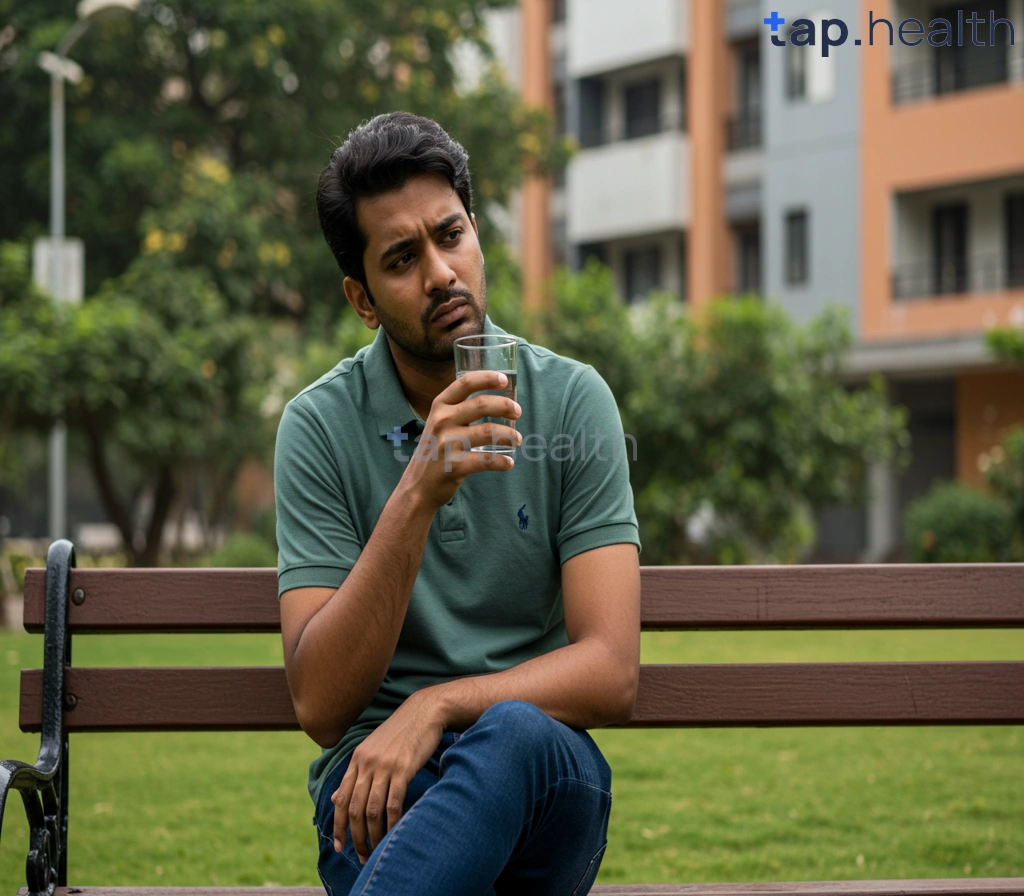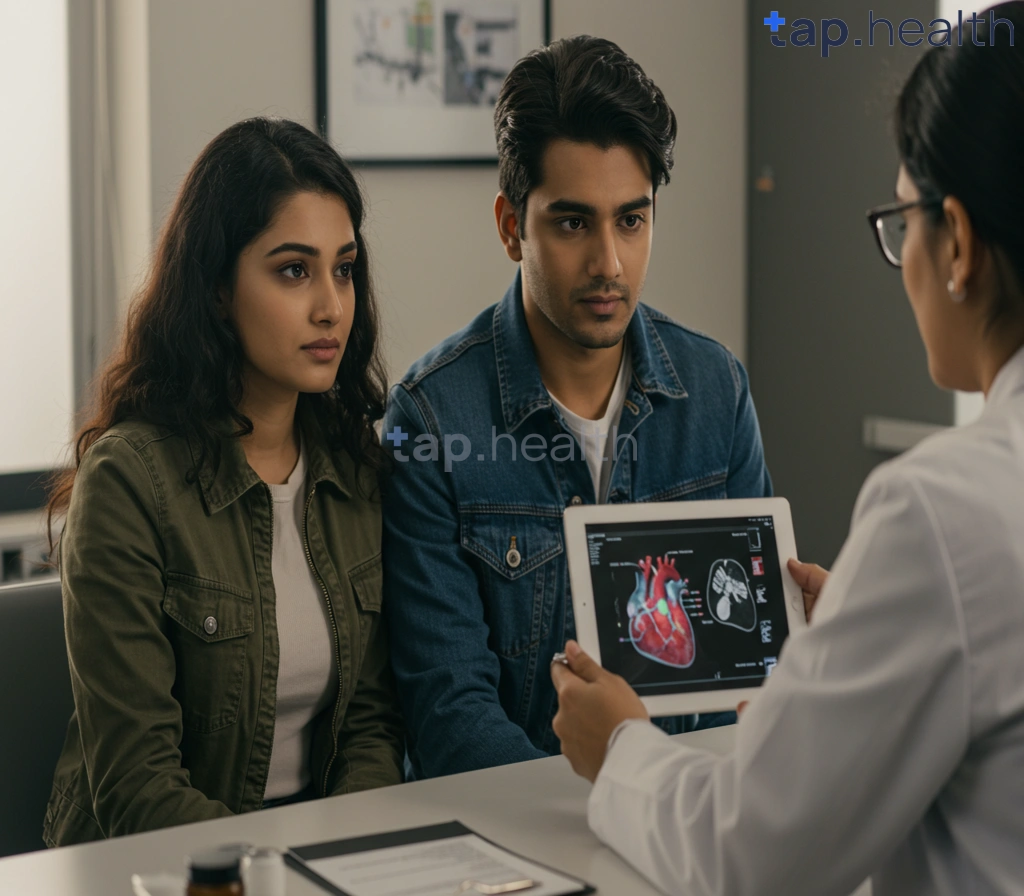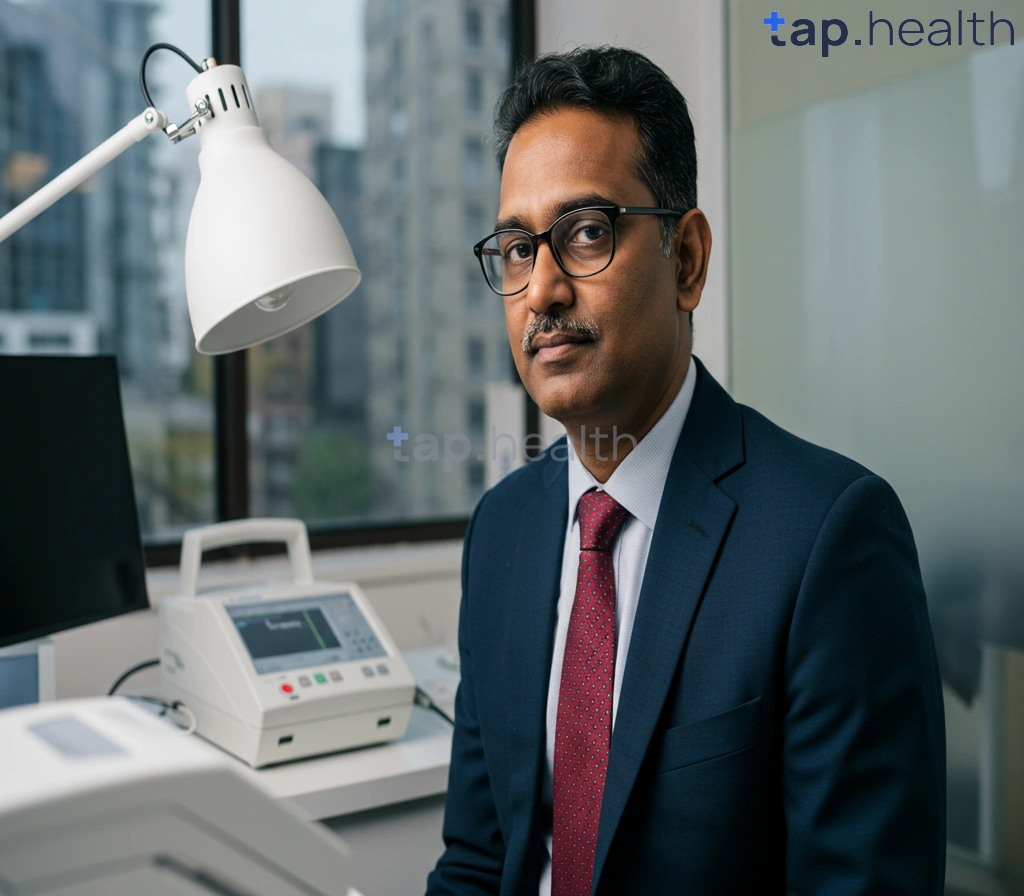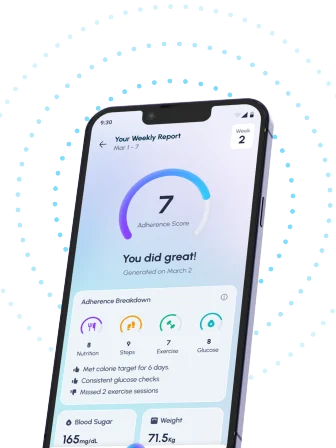Table of Contents
- Understanding High Blood Sugar Symptoms
- High Blood Sugar: Warning Signs & What to Do
- Hyperglycemia Symptoms: A Comprehensive Guide
- Is Your Blood Sugar High? Common Signs to Watch For
- Recognizing High Blood Sugar: Symptoms, Causes & Treatments
- Frequently Asked Questions
- References
Managing your health can feel like a constant juggling act, and understanding your body’s signals is key. One often-overlooked area is recognizing the signs of high blood sugar. Are you experiencing unexplained fatigue, increased thirst, or frequent urination? These could be indicators of a problem. This article, High Blood Sugar Symptoms: What You Need to Know, will equip you with the knowledge to identify potential issues and take proactive steps towards better health. Let’s dive in and explore the common symptoms and what you should do if you suspect high blood sugar.
Understanding High Blood Sugar Symptoms
High blood sugar, or hyperglycemia, is a serious concern, particularly prevalent in India and other tropical countries. Understanding its symptoms is crucial for early detection and management. Remember, less than 140 mg/dL is considered normal blood sugar. Levels between 140–199 mg/dL indicate prediabetes, while 200 mg/dL or higher suggests diabetes. Ignoring these signs can lead to severe long-term complications.
Recognizing the Signs
Symptoms can vary, but common indicators include increased thirst (polydipsia) and frequent urination (polyuria). You might also experience unexplained weight loss, despite increased appetite. Blurred vision is another frequent symptom, as high blood sugar affects the eyes. In some cases, individuals may experience fatigue, slow-healing wounds, and recurrent infections. These symptoms are often more pronounced in hot and humid climates common to many tropical regions, potentially exacerbating dehydration. For more information on maintaining healthy Blood Sugar Levels, check out our comprehensive guide.
Region-Specific Considerations
In India and other tropical countries, certain lifestyle factors like dietary habits and lack of physical activity, coupled with genetic predisposition, increase the risk of high blood sugar. The prevalence of diabetes is significantly high in these regions. Therefore, paying attention to even subtle symptoms is vital. If you experience any of these symptoms, particularly persistent thirst or frequent urination, consult a doctor immediately for testing and diagnosis.
Taking Action
Early detection is key to managing high blood sugar effectively. Don’t hesitate to visit your physician, especially if you’re experiencing multiple symptoms. Regular check-ups and lifestyle modifications, including diet and exercise, are crucial for preventing or managing this condition. Early intervention can significantly reduce the risks of long-term complications associated with high blood sugar, common in the Indian subcontinent and other tropical areas. Understanding why your blood sugar might spike in the morning can also be helpful in management; learn more in our article, Why Blood Sugar Spikes in the Morning and How to Manage Them.
High Blood Sugar: Warning Signs & What to Do
High blood sugar, or hyperglycemia, is a serious concern, especially prevalent in India and tropical countries. Understanding its symptoms is crucial for early detection and management. A normal fasting blood sugar level is between 70–99 mg/dL. Prediabetes is diagnosed at 100–125 mg/dL, while a reading of 126 mg/dL or higher indicates diabetes. Ignoring these warning signs can lead to severe health complications.
Recognizing the Symptoms
Symptoms of high blood sugar can vary, but some common indicators include excessive thirst (polydipsia), frequent urination (polyuria), unexplained weight loss, and increased hunger (polyphagia). You might also experience blurry vision, fatigue, slow-healing sores, and recurrent infections. In hotter climates like those prevalent in India and other tropical regions, dehydration due to high blood sugar can exacerbate existing symptoms, leading to more rapid deterioration. Pay close attention to these signs, especially if you have a family history of diabetes. Knowing The Best Times to Check Your Blood Sugar Levels can help with early detection.
What to Do if You Suspect High Blood Sugar
If you experience any of these symptoms, especially if they’re persistent, it’s crucial to consult a doctor immediately. A simple blood test can determine your blood sugar level and diagnose the condition. Early diagnosis and management are vital in preventing long-term complications such as heart disease, kidney failure, and nerve damage. In India and many tropical countries, access to affordable healthcare varies; proactive steps towards your health are paramount. Understanding the critical risks associated with extremely high blood sugar, such as a 750 Blood Sugar Alert, emphasizes the importance of prompt medical attention.
Taking Control of Your Blood Sugar
Managing high blood sugar often involves lifestyle changes, such as adopting a healthy diet rich in fruits, vegetables, and whole grains, regular exercise, and maintaining a healthy weight. Many traditional Indian remedies and herbal supplements, while often used, should only be considered in consultation with a healthcare professional to prevent potential interactions with medication. Remember, seeking timely medical advice is essential for your well-being.
Hyperglycemia Symptoms: A Comprehensive Guide
High blood sugar, or hyperglycemia, is a serious concern, especially prevalent in India and other tropical countries. Research shows that HbA1c levels above 9% are reported in over 30% of diabetes patients—a stark reminder of the widespread impact of this condition. Understanding the symptoms is crucial for early detection and management.
Recognizing the Signs
Hyperglycemia symptoms can vary, but common indicators include frequent urination, particularly at night (polyuria), and excessive thirst (polydipsia). You might also experience unexplained weight loss, despite a normal or increased appetite. Blurred vision is another frequent symptom, impacting daily life significantly. In more severe cases, individuals may experience fatigue, slow-healing wounds, and increased susceptibility to infections. These symptoms are often more pronounced in hotter climates, demanding increased vigilance. While hyperglycemia is a concern, it’s important to differentiate it from other conditions like hyperacidity. For information on symptoms of Hyperacidity, please refer to our related article.
Specific Considerations for Tropical Regions
The high temperatures and humidity in many Indian and tropical countries can exacerbate hyperglycemia symptoms. Dehydration is a major risk, further intensifying thirst and frequent urination. Therefore, staying hydrated is even more critical in these regions. Consider incorporating cooling measures and regular monitoring of blood glucose levels to minimize risks. Understanding normal blood sugar levels is also crucial. To learn more about what constitutes a normal range, you can check our article: Is a 100 mg/dL Blood Sugar Level Normal? Comprehensive Guide
Taking Action
If you experience these symptoms, particularly if you have a family history of diabetes or are at risk, seek immediate medical attention. Regular check-ups and proactive management, including dietary adjustments and potentially medication, are essential for controlling blood sugar levels and preventing serious complications. Early diagnosis and treatment are key to managing hyperglycemia effectively and maintaining a healthy life.
Is Your Blood Sugar High? Common Signs to Watch For
High blood sugar, or hyperglycemia, can manifest differently depending on the individual and their overall health. While a blood test is the definitive way to know your blood sugar levels (below 5.7% is considered normal; 5.7%–6.4% indicates prediabetes, and 6.5% or higher suggests diabetes), being aware of common symptoms can prompt you to seek medical attention. Ignoring these signs can lead to serious long-term complications.
Frequent Urination and Excessive Thirst
One of the most noticeable signs of high blood sugar, especially in hotter climates common to India and tropical countries, is increased urination, particularly at night (polyuria) coupled with intense thirst (polydipsia). Your body tries to flush out excess glucose through frequent urination, leading to dehydration and increased thirst. This is crucial to watch for, especially if you experience these symptoms regularly.
Unexplained Weight Loss
While weight loss can have various causes, significant unexplained weight loss accompanied by increased hunger can be a symptom of high blood sugar. This occurs because glucose, your body’s primary energy source, isn’t being properly utilized, leading to increased appetite despite weight loss. In tropical regions, this can be easily overlooked due to the presence of other factors influencing appetite and weight.
Increased Hunger & Fatigue
Feeling constantly hungry even after eating and experiencing persistent fatigue are further indicators. This is because the body can’t effectively use glucose for energy, leading to both increased hunger and low energy levels. The heat and humidity in tropical countries can exacerbate fatigue, making it harder to identify this symptom as being related to high blood sugar.
Blurred Vision
Changes in vision, like blurred vision, can be a subtle but significant sign. High blood sugar can affect the lens and the fluid within the eye, impacting the clarity of your vision. Seeking immediate attention from an ophthalmologist is crucial if you experience any vision problems.
Consult a Doctor
If you are experiencing any of these symptoms, particularly if you live in India or a tropical country, it’s vital to consult a doctor or healthcare professional immediately for a proper diagnosis and management plan. Early detection and intervention are key to preventing serious health complications associated with high blood sugar. Regular health checkups, including blood sugar tests, are highly recommended for everyone, especially those with a family history of diabetes. Conversely, understanding what constitutes low blood sugar is equally important. For example, you might find the information in Is a 50 Sugar Level Normal? Understanding Low Blood Sugar helpful. It’s crucial to maintain a healthy blood sugar range, and knowing the signs of both high and low levels is key to proactive health management. For instance, learning about the symptoms and management tips associated with a blood sugar level of 70 can provide a more holistic understanding. You can learn more by reading Is a 70 Blood Sugar Level Normal? Symptoms & Management Tips.
Recognizing High Blood Sugar: Symptoms, Causes & Treatments
Understanding High Blood Sugar Levels
Maintaining healthy blood sugar levels is crucial, especially in hot and humid climates prevalent in many Indian and tropical countries. Ideally, pre-meal blood sugar should be between 80–130 mg/dL, and post-meal levels should be less than 180 mg/dL. Exceeding these levels can lead to various health complications. Recognizing the symptoms early is key to effective management. For example, understanding whether a blood sugar level of 110 mg/dL is normal can be important for individuals monitoring their health.
Common Symptoms of High Blood Sugar
High blood sugar, or hyperglycemia, often presents with noticeable symptoms. These can include increased thirst (polydipsia), frequent urination (polyuria), unexplained weight loss, blurred vision, and excessive hunger (polyphagia). In some cases, individuals may experience fatigue, slow-healing sores, and increased susceptibility to infections. In more severe instances, symptoms can manifest as ketoacidosis, a life-threatening condition. The symptoms may vary in intensity, with some individuals experiencing only mild symptoms while others experience more severe manifestations. It’s important to note that these symptoms can also be indicative of other health issues, so consulting a doctor is crucial for diagnosis.
Causes and Treatments for High Blood Sugar
High blood sugar is primarily associated with diabetes, either type 1 or type 2. However, other factors like stress, insufficient physical activity, unhealthy diets rich in processed foods and sugars – prevalent in many Indian and tropical cuisines – and certain medications can also contribute. Effective management involves lifestyle changes such as adopting a balanced diet emphasizing whole grains, fruits, vegetables, and lean proteins, incorporating regular exercise, and managing stress effectively. Medical treatments may include oral medications or insulin therapy, depending on the severity and underlying cause. Understanding the critical risks associated with extremely high blood sugar, such as in the case of a 700 blood sugar level, is essential for prompt medical intervention.
Seeking Help in India and Tropical Countries
If you are experiencing any of the above symptoms, especially in the context of increased thirst, frequent urination, or unexplained weight loss, it is imperative to consult a healthcare professional immediately. Early detection and treatment are vital for preventing long-term complications. Many hospitals and clinics across India and tropical countries offer specialized diabetes care, ensuring access to appropriate diagnosis and management strategies tailored to the specific needs of the region. Don’t hesitate to seek medical attention for a proper diagnosis and personalized treatment plan.
Frequently Asked Questions on High Blood Sugar Symptoms: What You Need to Know
Q1. What are the common symptoms of high blood sugar?
Common symptoms include increased thirst and urination, unexplained weight loss, blurred vision, fatigue, slow-healing wounds, and frequent infections. These can be worse in hot, humid climates.
Q2. What blood sugar levels indicate prediabetes and diabetes?
Normal blood sugar is below 140 mg/dL. 140-199 mg/dL suggests prediabetes, while 200 mg/dL or higher indicates diabetes.
Q3. Why is early detection of high blood sugar so important?
Early detection is crucial to prevent serious long-term health complications. Ignoring symptoms can lead to severe health problems.
Q4. What are the common treatments for high blood sugar?
Effective management typically involves lifestyle changes such as diet and exercise. Medication may also be necessary.
Q5. When should I seek medical attention for high blood sugar symptoms?
You should seek prompt medical attention if you experience persistent symptoms, especially increased thirst or urination.
References
- Understanding Type 2 Diabetes: https://professional.diabetes.org/sites/default/files/media/ada-factsheet-understandingdiabetes.pdf
- What is Diabetes: https://www.medschool.lsuhsc.edu/genetics/docs/DIABETES.pdf




